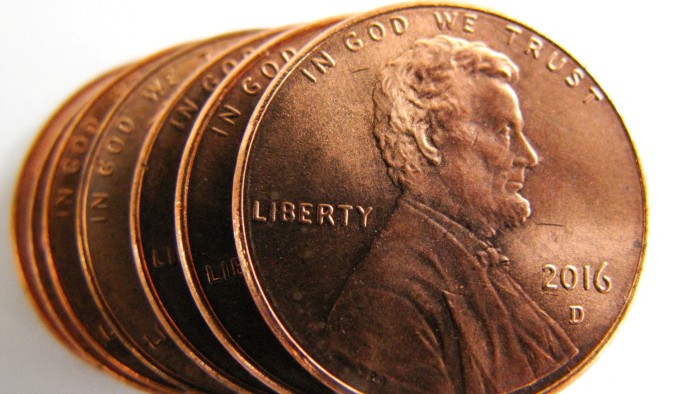Unlock the Editor’s Digest for free
Roula Khalaf, Editor of the FT, selects her favourite stories in this weekly newsletter.
The Trump administration will begin taking the penny, one of the US’s oldest coins, out of circulation after more than 230 years in existence.
The US Treasury on Thursday confirmed the decision to stop ordering the coin, which costs almost four times as much as its face value to produce.
“The Treasury has made its final order of penny blanks this month,” a spokesperson said. The US Mint, which produces the coin, would continue to manufacture pennies while an inventory of penny blanks exists, they said.
The Mint, which has made the coin since 1793, lost $85.3mn last year on its production of the penny after unit costs rose by 20.2 per cent owing to rises in the price of copper and zinc.
The next lowest denomination coin, the nickel, also costs the Mint more to produce than its face value. The five-cent coin costs 13.78 cents to produce, according to the agency’s annual report.
Both coins have cost more than their face value to produce for almost two decades. The Mint thinks the decision to make the US penniless will eventually save $56mn in materials costs.
The decision was first reported by The Wall Street Journal.
US President Donald Trump said earlier this year that his administration would stop producing the coin.
“For far too long the United States has minted pennies which literally cost us more than 2 cents,” Trump posted on his Truth Social network in February. “This is so wasteful! I have instructed my Secretary of the US Treasury to stop producing new pennies. Let’s rip the waste out of our great nations budget, even if it’s a penny at a time.”
The Mint began producing the penny in 1793, just a year after its establishment. But there has long been a lively debate about whether to continue to keep producing a coin with such a low face value.
While there are about 114bn of the coins in circulation, they are rarely used by US shoppers and retailers.
Several countries have scrapped their lowest denomination currencies following a rise in metals prices — and in inflation.
Canada became penniless in 2012 and began rounding up cash transactions to the nearest nickel. New Zealand removed its one and two cent coins from circulation in 1990, while Australia followed suit in 1992.
https://www.ft.com/content/7f3ce2ea-5095-4ed7-9bcd-7e97cd5b324c


